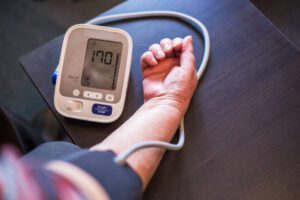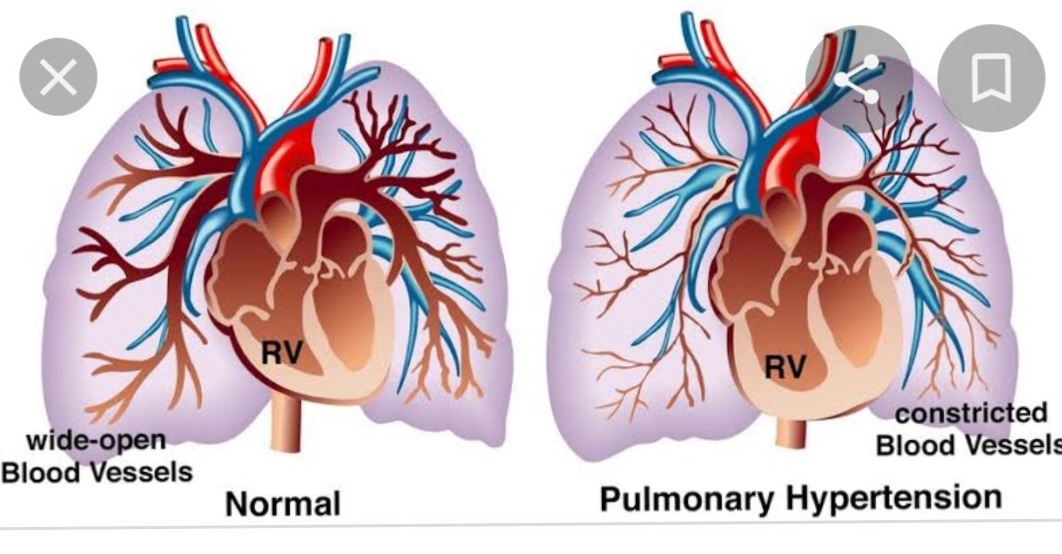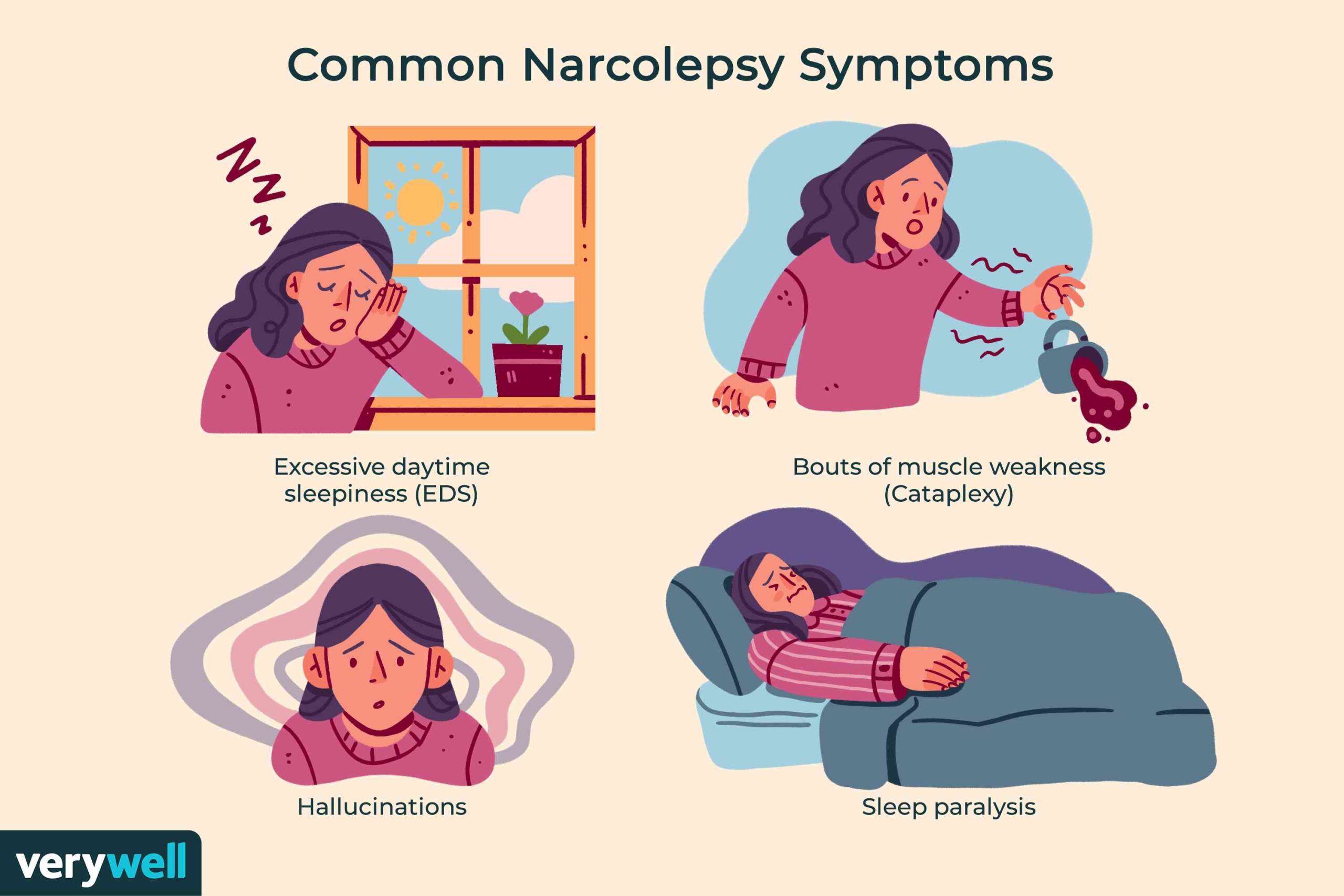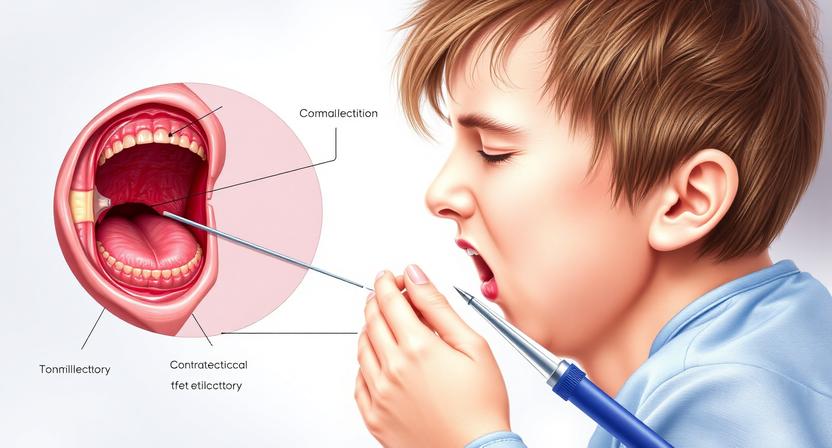Quick treatment of blood pressure at home-various aspects-
Every third individual on the planet encounters issues with his Blood Pressure occasionally or consistently. Many of those individuals are influenced by various factors that adversely affect the functioning of the Cardiovascular System.


High blood pressure is referred to as a “silent killer” because, in most cases, there are no clear symptoms. Nevertheless, serious complications can occur. These may include the following:
Heart attack — High blood pressure harms arteries that may become obstructed and hinder blood flow to the tissues in the heart muscle.
Stroke — High blood pressure can lead to blood vessels in the brain bursting or becoming blocked more easily.
Heart failure — The additional strain from high blood pressure can cause the heart to enlarge and fail to adequately provide blood to the body.
Kidney disease or failure — High blood pressure can damage the arteries surrounding the kidneys and disrupt their ability to effectively filter blood.
Vision loss — High blood pressure can put stress on or harm blood vessels in the eyes.
Sexual dysfunction — This may manifest as erectile dysfunction in men or decreased libido in women.
Angina — Over time, high blood pressure can result in heart disease or microvascular disease. Angina, or chest pain, is a frequent symptom.
Peripheral artery disease (PAD) — Atherosclerosis, resulting from high blood pressure, can lead to the narrowing of arteries in the arms and legs.
In case if there is no emergency and in a country like India if a MD MEDICINE doctor or a Cardiologist is available for consultation ,then you must consult them – that is what we advocate .Many people ask then why to read all this text -the reason is that it helps you to understand the pathology better ,you can cooperate with treatment better ,your treating physician is already busy with his patients and he does not have sufficient time to explain you all the things right from ABCD.
6 NATURAL WAYS TO REDUCE YOUR BLOOD PRESSURE
1. Reduce salt (SODIUM) intake and increase potassium consumption. This will enhance the functionality of your cardiovascular system and help eliminate excess fluid from the body.
Aim to limit sodium intake to no more than 1,500 mg daily, and achieve the potassium recommendation (4,700 mg/day) through food.
FOODS WITH HIGH SODIUM ARE (sodium content in mg/100 gm of food): TO BE AVOIDED
Pickles- 1200
Soy sauce/tomato ketchup- 900-1100
Sandwich – 750
Readymade soups- 700
Frozen food – 700
Pizza- 650
Biscuits- 550
Namkeen – 500
Bread- 450
Cheese- 350-550
FOODS WITH HIGH POTASSIUM ARE (POTASSIUM content in mg/100 gm of food): TO BE ADDED IN DIET
White beans- 550
Potato/sweet potato – 450
Beet- 300
Spinach- 300
Banana- 250
Coconut water- 200
Salmon fish- 200
Tomatoes – 200
Oranges- 200
Yoghurt – 150
Pomegranate- 150
Dried apricots- 150
Also, discontinue the consumption of fast food and other junk foods. Instead, you should increase your intake of fish and seafood. In fact, fish contains numerous essential nutrients that the human body does not produce. Low-calorie diets aimed at reducing blood pressure should include fruits, vegetables, and fat-free dairy products. Eliminate foods that are high in cholesterol and saturated fats. Modifying your eating habits is typically the initial step toward lowering blood pressure. If you implement some other methods in addition to dietary changes, such as adopting a healthier lifestyle, your blood pressure will decrease much more quickly.
2. Exercise and weight loss
It has also been established that exercise and relaxation were shown to decrease anger, particularly hostile expressions concerning individuals who were likely to discuss their issues. Blood pressure was lowered, heart rate was decreased, and overall benefits were observed from exercise.
By adhering to current recommendations regarding exercise—30 minutes daily, most days of the week—you can significantly lower your blood pressure. If you have been inactive, consider trying aerobic activities to decrease your systolic blood pressure—the upper value—by three to five points and the diastolic by two to three. Individuals who engage in physical activity often find they can reduce the number of hypertension medications they take. Choose an activity you enjoy—walking, running, swimming, cycling—and stay committed to it.
Research has consistently demonstrated that losing just a small amount of weight can greatly influence your blood pressure. Excess body weight causes your heart to work harder. This additional pressure can result in hypertension, whereas shedding pounds alleviates your cardiovascular strain. If you are overweight or obese, weight loss might be sufficient to regulate your blood pressure.
3. Avoid caffeine. limit to 1-2 cups of coffee each day.
Coffee offers certain health advantages, but reducing blood pressure isn’t among them. Caffeine can trigger short-term increases in blood pressure, even in individuals without hypertension. If you have elevated blood pressure, it is advisable to limit your caffeine consumption to roughly two cups of coffee each day. You can determine if you are vulnerable to caffeine’s blood-pressure-raising effects by measuring your blood pressure before and within 30 minutes after having a caffeinated drink. If it rises by 5 or 10 points, you might be sensitive to caffeine.
4. Relieve stress through yoga or meditation.
Effectively managing the stress in your life could assist in lowering your blood pressure, though there is insufficient research to provide a universal stress-reduction strategy. “Several practices have been developed for relaxation, such as yoga, meditation, music therapy, and self-hypnosis, but determining which is superior or the most appropriate is a question that remains to be resolved through clinical trials,” states Dr. Anirban Biswas. However, he suggests that individuals with high blood pressure explore stress management techniques and choose one they can practice regularly.
Yoga serves as a wonderful method for stress relief. A recent study in New Delhi revealed that yogic breathing exercises decreased blood pressure in hypertensive individuals, likely due to their impact on the autonomic nervous system, which regulates heart rate, digestion, and other largely involuntary functions.
Meditation—whether it includes chanting, breathing, visualization, or a combination of these—can serve as an effective stress-management aid for numerous individuals. The key factor is that it should make you feel positive, and that you can commit to it regularly.
5. Reduce alcohol consumption and stop smoking.
Research indicates that consuming more than two alcoholic drinks daily heightens the risk of hypertension for both genders. If you choose to drink, consider having your alcoholic beverage with a meal, as this may mitigate its impact on blood pressure.
What Is The Best Treatment For High Blood Pressure?
High blood pressure is referred to by many as a silent killer. How many of you understand why it is called a silent killer? It is because, initially, individuals do not exhibit any symptoms, and death can result from remaining unheard for an extended period.
According to a report released by the World Health Organization, there are 57 million high blood pressure patients globally. High blood pressure occurs when the pressure of blood in the body exerts more force on the artery walls than what is considered normal.
High blood pressure does not occur in isolation; it brings along related conditions such as heart attack, heart failure or stroke, kidney failure, and diabetes. In such circumstances, it is crucial to prevent this disease. In this blog, we are going to provide you with some of the best and most beneficial treatments for managing hypertension. If you are also a high BP patient, you can adopt these strategies as well.
Best Treatment For High Blood Pressure
If you are suffering from hypertension, you should choose to lead a healthy lifestyle. Embracing a healthy lifestyle is fundamentally important for treating high blood pressure. Here are some modifications you can implement into your daily routine:
Lose Weight From Waistline: Excess weight around your waistline can heighten the risk of high BP. If you are overweight or obese, shedding some pounds can significantly help in lowering blood pressure. Being overweight can disrupt your breathing during sleep, which can elevate blood pressure.
Reduce Salt Intake: Decrease the quantity of salt in your diet; consuming a high amount of salt can be detrimental to your health. Even a minor reduction of salt in your diet can positively impact your blood pressure, potentially lowering it by 5 to 6 mm. hg through salt restriction. Individuals with hypertension should limit daily sodium intake to less than 2,300mg.
Regularly Exercise: Engaging in daily exercise for at least 150 minutes can assist in managing hypertension and enhancing heart health. You can also practice some simple breathing exercises for immediate relief from hypertension.
Eat A Healthy Diet: By consuming a diet that is rich in whole grains, fruits, and vegetables, you can help balance blood pressure. These foods are abundant in potassium, magnesium, and calcium, which aid in managing hypertension. Limit fat intake, especially saturated and trans fats, and include healthy fat sources like fish, nuts, and seeds.
Limit Alcohol and Quit Smoking: These two factors are the primary contributors to uncontrolled blood pressure. If you are addicted to alcohol and smoking, it can lead to heart-related issues and potentially death. Additionally, it diminishes the efficacy of high blood pressure medications or capsules. By eliminating these unhealthy habits from life, an individual can lower blood pressure by approximately 4 mmhg.
Ayurvedic Remedies For The High Blood Pressure Treatment At Home
Here are some ayurvedic remedies for hypertension that may assist in stabilizing blood pressure and maintaining heart health.
Ashwagandha is a well-known Ayurvedic herb recognized for its ability to alleviate stress and manage blood pressure. It functions by lowering the level of cortisol (the stress hormone) in your body, which contributes to symptoms like hypertension and anxiety disorders. It can be consumed in the form of powder or as blood pressure capsules.
In cases of high blood pressure, dissolve one teaspoon of black pepper powder in half a glass of lukewarm water. Continue to consume it after two hours. This addresses the symptoms associated with high blood pressure.
Individuals with high blood pressure should walk barefoot on green grass for 10-15 minutes. Daily walking helps normalize blood pressure.
Yoga is an ancient Indian practice aimed at maintaining health for both body and mind. Certain yoga asanas and pranayamas, including Shavasana (Corpse Pose), Anulom Vilom (Alternate Nostril Breathing), and Adho Mukha Shavasana (Downward-Facing Dog Pose), can aid in lowering blood pressure and alleviating stress.
Meditation serves as a powerful method to soothe the mind and diminish stress. Consistent meditation practice can be beneficial in regulating blood pressure.
There are multiple Ayurvedic brands available in the market that provide Ayurvedic medicine for high blood pressure, one example being Sheopals Hyper Care BP capsules, which are entirely made from Ayurvedic herbs designed to manage high blood pressure.
You can also manage hypertension using beetroot. Take one beetroot and half a radish. Peel them and slice them into small pieces. – Blend them in a mixer to extract the juice. Consuming this juice once daily can help cure high blood pressure.
What Should You Do To Get Instant Relief From High Blood Pressure?
As we are aware, individuals with high blood pressure often exhibit no symptoms, which increases the risk of brain vessel rupture. In this context, home remedies such as respiratory exercises, cold water baths, drinking water, and lying down may help lower high blood pressure within 5 minutes. However, you should immediately consult your doctor for emergency medical assistance in such situations.
When To Visit The Doctor?
Both low and high blood pressure can be hazardous. When a patient’s blood pressure exceeds 140/90, that condition is referred to as hypertension. If, despite home remedies to reduce blood pressure, the patient experiences pain and heaviness in the chest as symptoms of high blood pressure, along with difficulty breathing, it is critical for the patient to seek medical attention promptly. Symptoms such as headache, weakness, or blurred vision warrant a doctor’s visit as soon as possible; otherwise, it may evolve into a serious condition and potentially become life-threatening.
Conclusion
In summary, hypertension poses a serious health risk; if left untreated, it can inflict damage on the heart and blood vessels over time. We have outlined several treatments above; by adhering to them, you can manage high blood pressure and protect yourself from additional health issues.
If you have a diagnosis of high blood pressure, be sure to collaborate with a healthcare professional to create a treatment plan tailored to your needs
10 ways to manage high blood pressure without medication
By implementing these 10 lifestyle modifications, you can decrease your blood pressure and lessen your likelihood of heart disease.
If you experience high blood pressure, you might question whether medication is necessary for treatment. However, lifestyle modifications are essential in managing high blood pressure. Maintaining blood pressure through a healthy lifestyle could prevent, postpone, or diminish the necessity for medication.
Here are 10 lifestyle modifications that can reduce blood pressure and keep it maintained.
1. Shed excess weight and monitor your waistline
Blood pressure frequently rises with increasing weight. Being overweight can also disrupt breathing during sleep, leading to a condition known as sleep apnea. This sleep apnea can further increase blood pressure.
Losing weight is one of the most effective ways to regulate blood pressure. If you are overweight or obese, shedding even a small amount of weight can assist in lowering blood pressure. Blood pressure is recorded in millimeters of mercury (mm Hg). Generally, blood pressure might decrease by approximately 1 mm Hg for every kilogram (about 2. 2 pounds) lost.
Additionally, waist size is significant. Carrying excess weight around the waist can elevate the chances of high blood pressure.
In general:
Men face risks if their waist circumference exceeds 40 inches (102 centimeters).
Women face risks if their waist circumference exceeds 35 inches (89 centimeters).
These measurements can differ among ethnic groups. Consult your healthcare provider regarding a healthy waist size for you.
2. Engage in regular physical activity
Consistent aerobic exercise can decrease high blood pressure by approximately 5 to 8 mm Hg. Continuing to exercise is crucial to prevent blood pressure from rising again. As a general recommendation, strive for at least 30 minutes of moderate physical activity daily.
Exercise can also prevent slightly elevated blood pressure from progressing to high blood pressure, known as hypertension. For individuals with hypertension, regular physical activity can help reduce blood pressure to safer levels.
Examples of aerobic activities that may assist in lowering blood pressure include walking, jogging, biking, swimming, and dancing. Another beneficial type of exercise is high-intensity interval training, which incorporates brief bursts of intense activity mixed with periods of lighter activity.
Strength training may also contribute to lowering blood pressure. Aim to incorporate strength training exercises at least two days weekly. Consult with a healthcare professional to develop an exercise plan that suits you.
3. Follow a nutritious eating plan
Maintaining a diet abundant in whole grains, fruits, vegetables, and low-fat dairy products while being low in saturated fat and cholesterol may lower high blood pressure by up to 11 mm Hg. Examples of dietary plans that can aid in blood pressure management include the Dietary Approaches to Stop Hypertension (DASH) diet and the Mediterranean diet.
Potassium in the diet can reduce the impact of table salt and sodium on blood pressure. Food manufacturers frequently add sodium to processed foods to enhance their salty flavor. Aim for a daily intake of 3,500 to 5,000 milligrams (mg) of potassium. It may decrease blood pressure by 4 to 5 mm Hg. Consult your healthcare provider regarding your necessary potassium intake.
4. Decrease salt and sodium in your diet
Even a slight reduction in sodium intake can benefit heart health and blood pressure. The influence of sodium on blood pressure differs among various groups of individuals. Generally, restrict sodium to 2,300 mg daily or less. However, for most adults, the optimal limit for sodium is 1,500 mg daily or less. Achieving this could reduce high blood pressure by approximately 5 to 6 mm Hg.
To reduce sodium intake in your diet:
Read nutritional labels. Seek low-sodium alternatives for foods and beverages.
Consume fewer processed foods. Only a minimal amount of sodium is present naturally in foods. Most sodium is added during manufacturing.
Refrain from adding table salt. Utilize herbs or spices to enhance flavor in meals.
Prepare meals. Cooking allows you to manage the sodium content in your dishes.
5. Limit alcohol
Restricting alcohol consumption to less than one drink per day for women or two drinks per day for men may assist in lowering blood pressure by approximately 4 mm Hg. One drink is equivalent to 12 fluid ounces of beer, 5 ounces of wine, or 1. 5 ounces of 80-proof liquor.
However, excessive alcohol intake can significantly elevate blood pressure. It can also diminish the efficacy of blood pressure medications.
6. Quit smoking
Smoking increases blood pressure. Quitting smoking aids in lowering blood pressure. It can also reduce the risk of heart disease and enhance overall health, possibly resulting in a longer lifespan.
7. Obtain sufficient sleep
Consistently getting fewer than seven hours of sleep per night over several weeks can contribute to hypertension. Conditions that might interfere with sleep include sleep apnea, restless leg syndrome, and general insomnia.
Adults should strive for 7 to 9 hours of sleep every night. Inform your healthcare provider if you frequently encounter sleep difficulties. Identifying and addressing the underlying cause may enhance sleep. However, if you do not have sleep apnea or restless leg syndrome, adhere to these straightforward suggestions for obtaining improved rest.
Maintain a sleep routine. Go to bed and wake up at the same time every day. Try to keep a consistent schedule on weekdays and weekends.
Create a calming environment. This involves keeping the sleep area cool, quiet, and dark. Engage in relaxing activities during the hour before bedtime, such as taking a warm bath or practicing relaxation techniques. Turn off or dim bright lights, particularly from TVs, phones, or computer screens.
Monitor your food and beverage intake. Avoid going to bed feeling hungry or overly full. Try not to eat large meals near bedtime. Also, limit or eliminate nicotine, caffeine, and alcohol close to bedtime.
Restrict naps.
For detailed understanding of eitiology ,diagnosis ,investigations ,management of hypertension pl click on the link given below-It is always better to view links from laptop/desktop rather than mobile phone as they may not be seen from mobile phone. ,in case of technical difficulties you need to copy paste this link in google search. In case if you are viewing this blog from mobile phone you need to click on the three dots on the right upper corner of your mobile screen and ENABLE DESKTOP VERSION .





